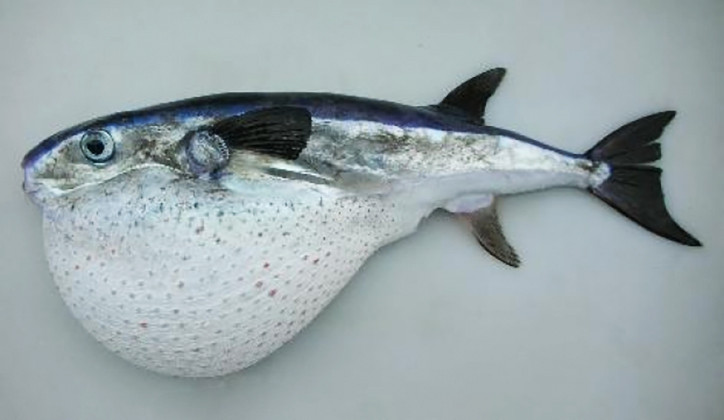Fish of the Lagocephalus genus of the Tetraodontidae (pufferfish or puffers) family of the Tetraodontiformes order of the Acanthopterygii superorder.

(Oceanic puffer. Photo by © Oddgeir Alvheim. fishbase.org)
Oceanic puffer (Lagocephalus lagocephalus) was first described in 1758 by the Swedish naturalist Carl Linnaeus (1707-1778).
It inhabits the depth of 10-476 meters, usually 10-100 meters. It is a pelagic species, which occasionally enters the estuaries. The maximum recorded length is 61 cm. The maximum weight is 3.2 kilograms. It feeds on crustaceans and squids.

(Oceanic puffer. Photo © reggiotv.it)
It has been found in the Adriatic Sea several times.
The fish flesh contains tetrodotoxin, which is a strong non-protein poison of neuroparalytic action that is best known due to the Japanese “fugu” dish, which is usually cooked from a relative of Lagocephalus lagocephalus, that is, Takifugu rubripes, and is found in the flesh of the latter as well.
Names of Oceanic puffer (Lagocephalus lagocephalus) in other languages as follows:
Tamboril liebre (Spanish), Capolepre (Italian), Blauer Kugelfisch (German), Sterczel (Polish), Обыкновенный зайцеголовый иглобрюх (Obyknovennyi zajcegolovyi iglobrjuh) (Russian), Oceanska napuhača (Serbian, Croatian), Compère océanique (French).